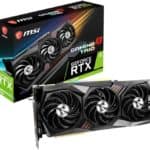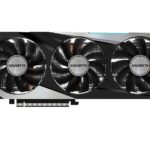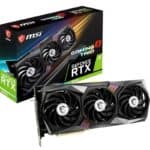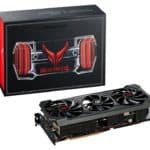Best Graphics Card – Best GPUs for Gaming in 2022
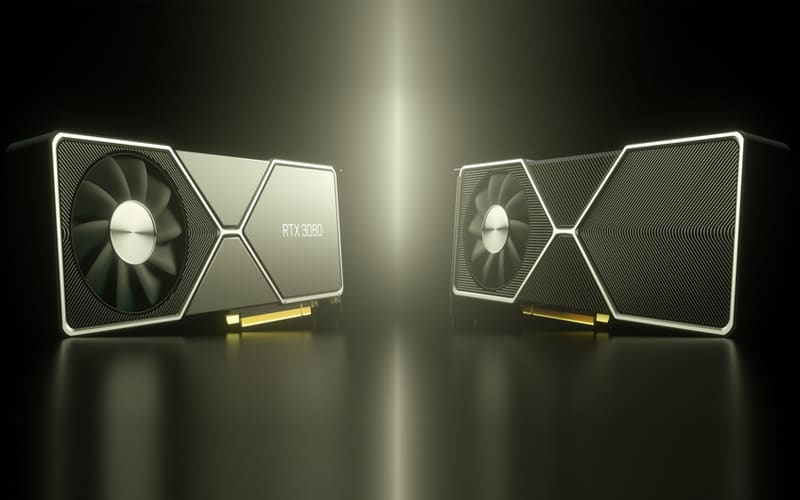
If you’re buying a new GPU in 2021 whether you are a PC gamer or not, you have a lot of choices to pick from if you are in the market to get the best graphics you possibly can with the hardware at your disposal. Whether it is a video card made for 4K, ones that can get the most out of your new 144Hz display, ones that are good for VR, or even a video card that is just great value (well, there’s a lot of overlap here, but shh…). The only problem you are going to have is actually getting hold of one at the moment, but if you are quick on the button, these are the cards you should be definitely be looking out for right now.
In this article, we’ve gathered our favorite gaming cards for the best graphics cards for different price ranges and needs. Below, we’ll dive into each of what are really the best graphics cards, give our impressions of the cards and also outline everything you need to know about GPUs in our buying guide at the bottom of the article in case you are unfamiliar with any of the specs being discussed.
Note: We’ve linked to specific models of each card such as the RTX 3080 from MSI. The given specs correspond to that model; other models will be slightly different. Overall, each model of a given graphics card should perform the same, sans differences in OC headroom and cooling.
You might also be interested in these articles:
Best graphics card under $200 in 2021
Best AMD Radeon RX 6800 GPU in 2021
Best graphics card for 4k gaming in 2021
GPU Hierarchy: The ultimate graphics card Tier List in 2021
Products at a Glance
How we picked
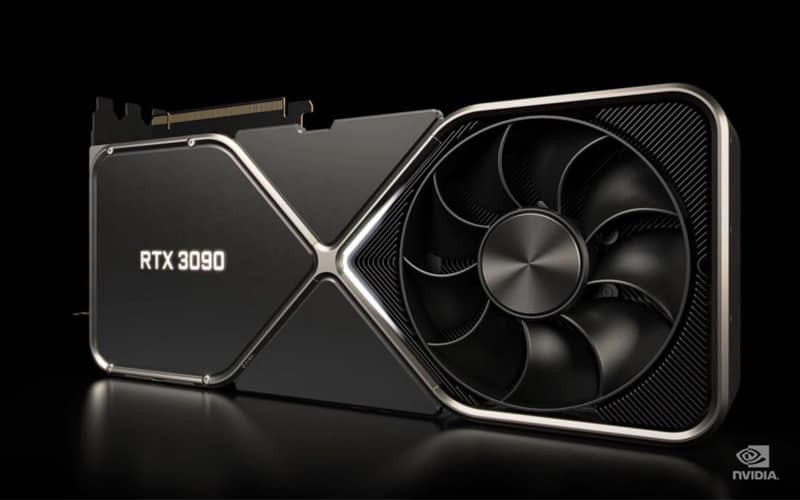
(Image credit: Nvidia)
This particular page is all about power and performance from your graphics card. You won’t really find “oh that will do!” here. With the raft of amazing GPUs released in the last year the only reason you should settle for second best is if you can’t actually manage to get hold of the one you ant or are too impatient to wait until GPUs begin to come back into stock. We have grabbed a selection here from both Nvidia and AMD so fanboys and girls from both camps are well catered for.
So if you are looking to achieve the best graphics possible from your humble rig to play your PC games the way they were meant to be played, whatever graphics card you are using, whether it is an RTX 3080 or an AMD Radeon RX 6800 you can find out what we thought of them here.
How we tested
All the cards we featured are tested in our labs so we know exactly what we are recommending. Alongside our sister site WePC where you can find everything you need to know about the world of the gaming PC –, our trusty team of benchmarkers and system nerds get deep into the deep dive on all new GPUs so you don’t have to worry. Graphics cards are tested in our own special testing rig against a vast array of PC games on the best graphics settings and we only recommend the cards we would be happy to put in our own systems.
Best Graphics Card – Best GPUs for Gaming in 2022
- Unbelievable performance levels
- Great design
- Lovely RGB
- Insanely expensive
- Also insanely difficult to get hold of at the moment
- Performance: The RTX 3090 is the most powerful card you can bring home today. Except you can’t as they are rarer than pink hedgehogs. If you want to game in 4K then this is fire and forget. Never tweak a graphics setting to get more performance again.
- Value: The RTX 3090 is insanely expensive to start with. By the time you have added on scalp tax it rapidly gets beyond the reach of mere mortals
If money is no object to you, and you believe personally that every penny in your account should be devoted to superior in-game performance, then you need to check out what our old friends at MSI have been cooking up with their Gaming GeForce Gaming X Trio.
Right off the bat, I can tell you that this card is going to give you an out-of-the-box overclocked performance bench of 1785MHz, alongside the 24GB of GDDR6x RAM that comes in a 3090. However, this card utilizes it well – possibly better than others in this list to the extent that we would call it the fastest and most consistently high-performing card on the market today (for general gamer use. You can expect 4K UHD performance with the factory overclock alone, and the 24GB of GDDR6x means that you are going to struggle to find yourself a task that this card won’t be able to tackle.
All of that raw performance power is of course offset by potential heating issues, but you don’t need to worry. This card is all set to go with the fresh design of the MSI Tri Frozr 2 cooling solution, so, along with more efficient core pipes and improved fans you can expect a greater heat dissipation, with the core pipes themselves designed to channel heat from the GPU into the heatsink directly, which has a huge impact on how this card performs in regards to thermal optimization.
- Smashes through 4K gaming
- 16GB GDDr6
- Head to head with Nvidia Geforce RTX 3080
- Expensive
- 8 pin connector
- Difficult to locate at the moment
- Performance: Finally a card from AMD that at least makes Nvidia look over with interest. It’s not a true contender yet, but it’s a step up the ladder for sure, especially with DX11 games
- Value: In theory, it is a bit more expensive than the RX 6800 which makes it tough to recommend over that card as the gains aren’t that large. Is this not worth it or is the AMD Radeon RX 6800 tremendous value? It’s actually a bit of both to be honest.
Now, if you are sat reading this and completely unable to get your hands on a new GPU, but still desperately want to get a new GPU into your PC, then you should look no further than the RX 6800 XT from AMD which is more than worth the wait.
First and foremost you are going to be getting all of that RDNA 2 goodness you need – including ray tracing, smart access memory, improved performance-per-watt, and more importantly improved in-game performance. The key difference here though is that you will be seeing an even bigger increase in that performance over RDNA 1, thanks to more power being pumped into the AMD Radeon RX 6800 XT.
Comfortable FPS rates over 60 in games at 4K and at ultra-high settings, a game frequency of 2010 MHz and a boost clock of 2250 MHz, as well as 128 MB of infinity cache memory and 16GBs of GDDr6 memory. This card goes head to head with the Nvidia RTX 3080 – and if you are looking to spend a little more on your GPU so that you can experience a bit more in-game performance over the RX 6800, then you really can’t go wrong.
Now, the AMD Radeon RX 6800 XT is just as (if not more) popular than the 6800 itself, and there are plenty of different RX 6800 XT models for you to choose from (you can have a read through our favorites here). But, if you do want an alternative to the RX 6800 that builds on the strongest areas of AMD’s GPU, then the RX 6800 XT can do you no wrong
- TRI FROZR 2 cooling
- Extremely powerful
- Unbeatable in bang-for-buck stakes
- Large
- Performance: You could argue that the Nvidia Geforce RTX 3070 is one of the best GPUs ever to hit the market. Amazing performance, quality ray-tracing and looks great to boot. Performance on a par with the RTX 2080 Ti
- Value: And with the last line above when you factor in it is less than half the price of that card, wow, just wow. It’s still not cheap but bang for buck-wise, now we are talking.
If you want aesthetics, cooling, and reliability, look no further than the MSI NVIDIA GeForce RTX 3070 8GB GAMING X TRIO. Yet again, similar to that of their RTX 3080 variant, it comes with all the bells and whistles we’ve become accustomed to such as the FROZR 2 cooling system and that RGB lighting gamers know and love.
Let’s first talk about that cooling and why it’s vital to the card’s performance. As stated previously, the MSI NVIDIA GeForce RTX 3070 8GB GAMING X TRIO uses the TRI FROZR 2 cooling system in addition to newly designed TORX FAN 4.0 blades, combining to create extremely efficient thermal dissipation, keeping your 3070 cool even under intense stress. There’s also some tech called Airflow Control packed in which direct air to where it’s required for maximum cooling. Couple this with the wave-curved 2.0 fin edges and you’ll get a quieter overall GPU rather than the blustery noises of the past. All of this comes together to create a quiet yet extremely cool graphics card that’s a necessity due to the sheer power. If it weren’t to have this cooling, it would likely overheat and essentially turn into an expensive paperweight.
Looking more on that power, let’s delve a little into the actual specs. You’ll be taking advantage of the card’s core 1500MHz clock, boostable up to 1830MHz, giving you even more punch if you choose to overclock. There’s also 8GB of GDDR6 memory in conjunction with 5888 CUDA Cores allowing for your AAA games to run as smooth as possible even at 4k resolutions.
Finally, the aesthetics. It looks exactly like you’d expect from an MSI Gaming TRIO with the three-fan configuration and those simple but effective RGB lighting placements that give the card a little flair. The black and grey colors give the Nvidia Geforce RTX 3070 a professional and stealth-like finish that will fit right into a number of PC builds, matching that of other components that’ll surely be in there.
- Best value 6900 XT
- Rivals the 3090
- Great cooling
- Expensive. You could get a car instead.
- Performance: More or less matching the RTX 3090 where it counts the AMD Radeon RX 6900 XT firmly puts AMD in gamers’ minds when they are looking to drop a small fortune on a new GPU when only the best graphics card will do.
- Value: This is AMD’s most expensive GPU to date, coming in a shade under $1000. It’s going toe to toe at your wallet as well as in performance circles. Can you spend your cash more wisely? For sure.
Cash burning a hole in your pocket? If you can get your hands on an AMD Radeon RX 6900 XT we can solve that problem for you as you won’t have much change left out of $1000, even at MRRP. By the time you add scalp tax on, well, we are sure you can see the picture that although this is one of the best graphics card you can get your hands on, actually getting your hand on it might prove tricky.
The Red Devil from PowerColor is actually one of the cheaper models of AMD Radeon RX 6900 XT which is why we have listed it here. It’s also far from the fastest but when we are talking about the insane levels of performance here to start with, we felt it was right to factor in price as well into the bargain.
Two 100mm fans sit with a 90mm fan in the middle and the impressive copper plate does a sterling job of taking the heat away, it’s a clever design and looks the part too. It would be the centerpiece of any new build for sure!
The AMD Radeon RX 6900 XT is the pinnacle of video cards from AMD and if you want the best graphics with a Team Red GPU in your rig, and you have the available funds and wherewithal to get one, then look no further.
Getting to actually buy an AMD Radeon RX video card is always going to be the issue, but if you want 4K gaming at your fingertips it’s worth biding your time and
- Extremely powerful option
- Great cooling - TRI FROZR 2
- 8-pin connector
- Needs a large case
- Performance: If you want good 4K gaming capability then you need a serious look at the RTX 3080 as your next video card as it proves you do not need to get hit with an RTX 3090 outlay to see next-gen graphics in-game.
- Value: The price hasn’t increased over the RTX 2080 and with its awesome performance this is a card that is desirable indeed, although don’t fall into the trap thinking it’s cheap. It’s not.
The Geforce RTX 3080 was touted as the best value graphics card in recent memory due to its incredible performance and overclocking capabilities, making it a close rival of the much more expensive RTX 3090. Looking at the price itself, the RTX 3080 will cost you around $699, backing up those strong remarks of being an extremely great value GPU.
MSI has been and still is known for creating top-tier Nvidia graphics cards both in terms of cooling as those extra features that improve their card’s overall capabilities. Its RTX 3080 Gaming X Trio 10G is another triumph, bolstering the already great cooling while also keeping the aesthetics we all know and love.
Let’s first talk about those stellar cooling properties. The MSI Gaming X Trio version of the RTX 3080 utilizes the TRI FROZR 2 cooling system coupled with newly designed TORX FAN 4.0 blades which combine to create extremely efficient thermal dissipation, keeping your Nvidia Geforce RTX 3080 cool even under intense stress. It doesn’t stop there though. Thanks to the cleverly designed thermal pipes, they provide maximum contact, spreading any heat across the whole of the heatsink thus again, aiding optimal operating temperatures.
However, in terms of size, this RTX 3080 is a beast coming in at 323 x 140 x 56mm as well as taking up three PCI slots making it the biggest in MSI’s Gaming Trio catalog. This, in turn, means you’re going to need a spacious case to be able to fit a card of this size in, putting Mini ITX builds firmly off the menu. On the flip side though, MSI knows that it’s big so have included a rigid anti-bending strap, hopefully putting your mind at ease that your shiny new GPU won’t be warping.
The only other slight annoyance is the fact that it requires three 8-pin connectors, a trait that other cards don’t possess. But, what this does do is give you the ability to put more power into the card and ultimately, increase performance through extensive overclocking that it’s capable of.
All in all, there’s no disputing how good the MSI Gaming GeForce RTX 3080 Gaming X Trio 10G really is. It has fantastic cooling yet still has the looks to fit right into an aesthetically pleasing build. This is why we love the RTX 3080 GPU from MSI and why you should probably grab one if you’re in the market for an RTX 3080 graphics card.
Things to consider
Finding The Best Graphics Card For You
If you’re sitting there asking yourself, ”I want the best graphics, what graphics card should I get?” and aren’t familiar with the specs and technical terms we’re tossing around, don’t worry: we have you covered.
While the last section covered the best video cards, in this section, we’ll go over key GPU specs and technical terms used throughout our reviews to make sure that you understand what’s going on when buying a new graphics card. For instance, you’ll want to be aware of GPU bottlenecking when buying a GPU and its partner CPU specifically to achieve the best graphics you can get on your system.
GPU Size
Yes. Its literal size. For most situations, this shouldn’t be a huge concern. However, certain cases and/or motherboards may cause problems.
For instance, some cases are smaller (like, smaller form factor cases, obviously) or just accommodate parts in such a manner that one might get in the way of another. More common than this is your motherboard having pieces mount in such a way that your large graphics card might get in the way of something else.
Of course, this problem is usually magnified by cards that are literally large, like the RTX 2080 we choose that has 3 fans.
Budget
If you are shopping on a budget then you need to consider the best bang for your buck. We’ve got a few articles on the best graphics cards on a budget right here:
We hope this helps you find the right graphics card for your gaming rig.
GPU Architecture
GPU architecture is, simply speaking, the baseline upon which a GPU is built. Typically, the first version of a GPU architecture debuts in a high-end card– like the RTX 3080 Ampere – and what you see afterward are cut-down versions of that same architecture. This means reductions in clock speed, VRAM, cores, etc. in order to manufacture cheaper versions of the basic architecture and target more price ranges.
We’re going to go ahead and list the common architectures below:
Architectures
- Nvidia Turing – Used by the RTX 20- series and the GTX 16- series. Outside of the GTX cards, enables features like real-time ray-tracing and DLSS.
- Nvidia Pascal – Nvidia’s previous generation architecture, used by the GTX 10- series. If you can find these cheap, they’re still worth a buy.
- AMD Polaris – Used by AMD’s RX 500 series.
- AMD Vega – Used by AMD’s Vega-branded graphics cards and the Radeon VII.
- AMD Navi – AMD’s next-gen architecture,
- Nvidia Ampere – Nvidia’s successor to Turing and featuring on the new 30-series cards
Clock Speed
Like with an Intel or AMD CPU, clock speed is really only useful as a measure of performance between GPUs with the same architecture. Sometimes, it’s only useful as a measure of performance between different versions of the same graphics card. Your exact clock speed usually won’t matter all that much, but factory overclocked versions of GPUs are quite common nowadays, and this will serve to enhance out-of-box performance.
Don’t expect graphics card overclocks to push, say, an RX 570 to the level of an RX 580. Expect roughly 10% performance gains in the absolute best of scenarios. With that said, overclocking isn’t really going to give you outstanding gains, just a tad more frames.
VRAM
VRAM is used by the GPU to handle streaming textures, post-processing effects, and high resolutions; you know, those things that video games are constantly doing.
The higher your VRAM, the better it should be able to handle resolutions like 1440p and 4K. You’ll generally want a minimum of at least 4GB VRAM available in a graphics card if you plan on playing VR games, for instance.
Where VRAM comes most into consideration is when comparing multiple models of the same GPU. The RX 570 and 580 both come in 4 and 8GB variants. Where possible, always opt for the 8GB version of these cards, unless you’re only playing in 1080p.
Framerate And Resolution
Framerate (FPS) and resolution refer to how your game is rendered. In simple terms, framerate is how smooth your gaming experience is, and resolution is how clear your experience is. Low framerates will have increased input latency and look choppier, while low resolutions will look blurrier and less defined.
Below, we’re going to list common framerate and resolution targets, which will better contextualize how we refer to each card’s performance.
FPS Targets
Note: Your gaming monitor’s refresh rate corresponds directly to the maximum framerate it can display.
- 30 FPS – The minimum acceptable framerate. The least smooth of the bunch. Most console games are around this range.
- 60 FPS – The baseline for a smooth gaming experience. Most monitors cap out at displaying 60FPS or 60 frames due to a 60 Hz refresh rate.
- 80 FPS – A common target for FPS on a G-Sync/FreeSync monitor, ideal for completely preventing screen tearing during performance drops.
- 100 FPS – A target for 120 Hz+ refresh rate monitors, where a benefit over 60 can be seen without completely sacrificing visuals.
- 120 FPS – Ideal for 120 Hz+ refresh rate monitors. Hyper-smooth.
- 144+ FPS – Ideal for 144 Hz+ refresh rate monitors. As smooth as it gets.
Resolution Targets
Note: “Native” resolution is the maximum resolution of a display in solution. A “native” image will always look sharper and clearer than an “upscaled” one.
- 720p (HD) – Considered low resolution by today’s standards. Can still look decent on smaller monitors or longer viewing distances, though.
- 1080p (Full HD) – Target resolution for most budget PC builds and gaming consoles. Matches with the native resolution of most HD TVs.
- 1440p (Quad HD) – Target resolution for higher-end PC monitors. PS4 Pro and Xbox One X also upscale from this resolution to achieve 4K visuals.
- 1800p (Quad HD+) – A common resolution used by gamers on 4K monitors who can’t push native resolution. Xbox One X and (more rarely) PS4 Pro also upscale from this resolution to 4K.
- 2160p (4K Ultra HD) – Native resolution of high-end monitors and 4K TVs. PS4 Pro and Xbox One X generally can’t achieve this without upscaling; PC gamers will need great graphics cards to do this without compromising settings.
Other Tech And Terms
Occasionally, you may see mentions of other GPU technologies in reviews and product pages. We’ll explain these here.
- AA (anti-aliasing) – An intensive post-processing technique that removes jagged edges, or “jaggies”, from an image. This can also provide the illusion of a higher resolution.
- Real-time ray-tracing – Highly-advanced lighting, reflections, and shading. Currently exclusive to Nvidia RTXGPUs, but an AMD equivalent may emerge eventually. Only supported by a few games so far.
- DLSS – An AA technique supplemented by AI deep learning, currently exclusive to RTX cards. Only supported by a few games.
- V-Sync – Prevents screen-tearing at the cost of higher latency and performance costs.
- G-Sync and FreeSync – Supported by Nvidia and AMD graphics cards, respectively. Identical technologies that replace V-Sync except with no input lag or performance loss. Only works alongside a monitor that’s equipped with either G-Sync or FreeSync.
- SLI/NVLink – Nvidia technology for multi-GPU setups. NVLink is superior, but multi-GPU setups have fallen out of fashion.
- CrossFire – AMD technology for multi-GPU setups. Has also fallen out of fashion.
Ray Tracing
All the rage at the moment is the newest tech to hit the circuit – ray tracing. The newer graphics cards from the big two including the Geforce RTX 3070 and the RX 6800 can handle all the advanced lighting effects that will really make your games pop. Of course you need a beefy old desktop PC to be able to handle the extra pressure on your frame rate – it’s not just down to the GPU to do all the work here.
Why are graphics cards so expensive in 2021?
It’s because of a mixture of silicon shortage, in part due to Covid supply chain issues and the rest is down to human greed. Pure and simple. Between scalpers snapping up all the cards and inflating the prices to flip them for a huge profit on eBay, coupled with crypto miners hoovering them all up so they can make their millions on virtual money, well yep, there’s none left for the likes of you and me at a reasonable price
Crypto Crisis easing?
While nobody is sure when the situation will begin to ease there are hopeful signs that things may start to ease. China is in the middle of passing laws to control crypto mining, which should hopefully mean that new stock ends up more or less where it is supposed to go to – straight into your gaming PC!
What is RTX?
RTX is the new product line from Nvidia that adds “RT cores” to their graphics cards. As of the time of writing, RTX cards only come in the Turing architecture with the RTX 20- Series. RT cores allow for real-time ray-tracing, DLSS, and other Nvidia-exclusive features designed to amp up visuals.
The biggest feature offered by RTX is definitely the real-time ray-tracing, which essentially allows for far more realistic reflections and light ray simulation than previously possible in games. Unfortunately, this also comes at a great performance penalty with modern games, though this will get better over time, as the technology evolves.
At the time of writing, very few games on the market support ray-tracing, and using it comes at a great cost to framerate and resolution. This is more of a future-facing feature than anything else, for now.
Is there an AMD equivalent to RTX?
The latest AMD Radeon RX 6800 series cards from AMD are the first to feature real-time ray-tracing and it’s fair to say they aren’t quite at the same level as Nvidia”s RTX offerings in many ways at this stage. So if you are keen on running this most demanding of latest technologies, you may want to lean towards Nvidia at this stage.
What GPU Should I Buy In 2021?
This depends on how far you can stretch your budget. Always buy as high up the tier list as you can realistically afford. GPUs are something that lasts a long time, even if they are superseded by new models so if you buy high up the pecking order, the chances are you won’t have to swap it out for longer.
What Graphics Card Do I Need For 4K?
Firstly, do you need to game in 4K? You will need a good monitor to start with and a pretty powerful card to be able to see the full benefit. There is a reason pro-gamers game at 1080p. if you are set on it though you will need one of the latest cards from AMD or Nvidia at the top of the range in order to have consistent success. For problem-free 4K gaming, you could be looking towards $1000.
Our Verdict
If money really is no object and you hit the lucky jackpot in actually finding one to buy then the RTX 3090 graphics card from Nvidia is going to be a card that will last in your system (should you want it to) for many years to come. It’s pretty much the pinnacle of what we have seen to date. Now, obviously, if you fats forward on another five years and technology continues to march on at the same relentless page, what we have then could well make this look like a Nintendo Gameboy, but at this moment in time, there is no sweeter GPU to consider putting in your next build.

